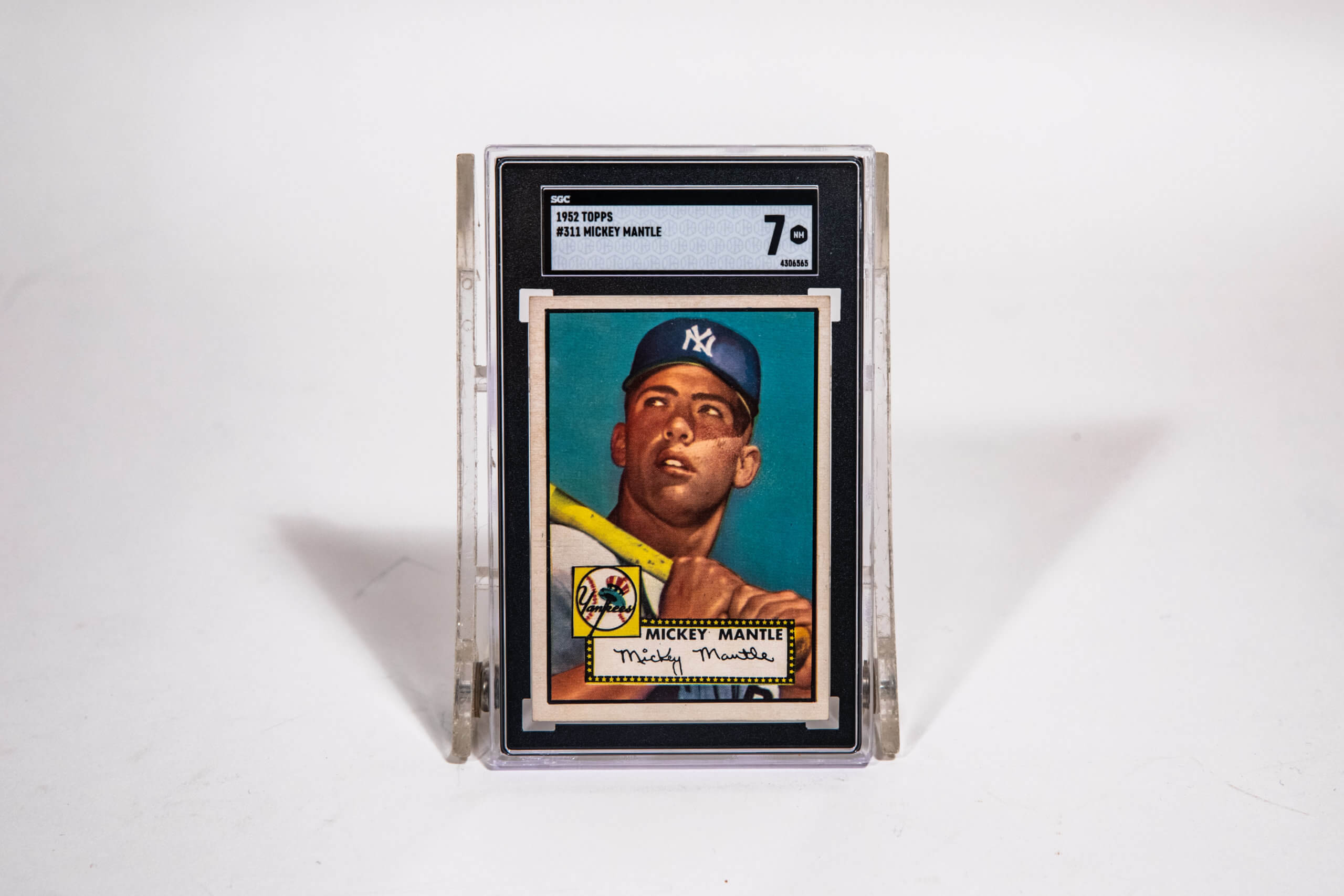Blog > Stories
Mutant Moneyball: A Data Driven Ultimate X-Men
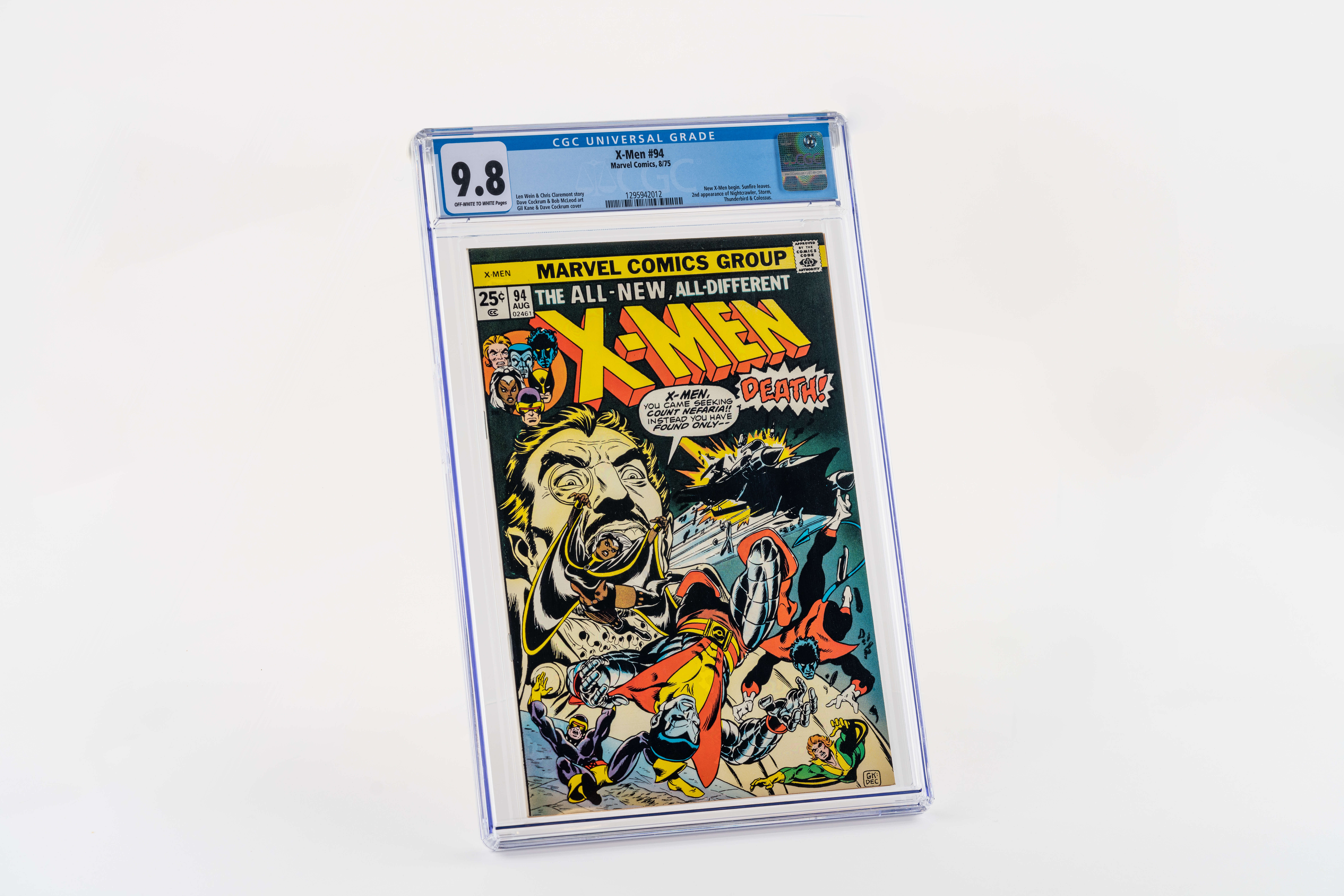
Blog > Stories
Mutant Moneyball: A Data Driven Ultimate X-Men

Exponential Variants - '80s and '90s
The 1980s
This is by far the most intriguing decade for X-Men value data. The 1960s is primarily the same characters in each issue, The 1970s is the victim of several years of reprinted material followed swiftly by an entirely new roster of characters. The ‘80s brings brand new characters to the mix, and also moves characters in and out of the series in such a way that one ever knows what X-Men team member(s) will be honed in on week to week. Members are captured, change affiliations, become possessed by demonic hordes, et.al.
By the beginning of the 1980s X-Men could no longer be considered a failed series, and writer Claremont was in full swing working with iconic artist John Byrne among others. The ‘80s start off with a bang when popular X-Men founding member Jean Grey, who had been dealing with dark forces within her, was killed off. This was hardly par for the course in comics of the era. Bryne left in 1981 just after the X-Men had a minor title change, becoming The Uncanny X-Men upon the release of issue #142.
Spin Offs and Variants Stress the Franchise
These early issues of the ’80s era are still considered some of the most important and interesting narrative arcs in X-History. The first issues of the 80s, dubbed “The Dark Phoenix” saga culminated with the aforementioned death of Jean Grey led directly into January 1981’s Days of Future’s Past, penned more by Bryne than by Claremont. Despite the popularity of Days of Future’s Past, Claremont’s need for control of the X-Men universe and the authority to have the final say on any and all of the writing pushed Bryne over the edge, leading to Bryne’s exit from the series.
“I am Fire and Life incarnate! Now and forever – I am Phoenix!”
— Fortnite (@FortniteGame) November 12, 2021
Dark Phoenix has arrived on the Island. Grab the Phoenix Force set now in the Shop. pic.twitter.com/E4b4hsnTII
Claremont was beginning to feel the strain of his successes, as characters from X-Men began riding their popularity into their own spin off series. Cockburn, one of the minds responsible for Giant Size X-Men 1 would pen a Nightcrawler mini-series. Wolverine’s self titled mag was released and continues to this day. Claremont himself created a series about a new group Mutant Students under Charles Xavier’s tutelage known as The New Mutants. His McCartney/Lennon like collaboration with Bryne had come to an end with Uncanny X-Men 143, but expectation from his publisher had not. As X-Men became more popular, there was more and more pressure to expand the title exponentially.
Where Claremont first begins to lose his grasp of the X-Men universe came in 1986. Noticing that the original X-Men were all but erased from the title they’d been the origin of, Marvel wanted to capitalize on X-Men success. Much to Claremont’s chagrin, Marvel decided to go full steam ahead on X-Factor #1, in which writer Bob Layton along with jilted X-scribe Bryne, decided they would bring Jean Grey back from the dead. Claremont was dumbstruck, and has spoken about the ordeal publicly. He had crafted a whole new life for Jean Grey’s love interest, Cyclops, and X-Factor bringing Jean Grey back so quickly put storylines leaning into this new life into immediate jeopardy.
“I was so pissed off. I couldn’t believe what they did to Cyclops. He was supposed to be a hero and they had him walking out on his wife and newborn child and not even thinking twice about it. No one was connecting the dots.”
Claremont almost quit over the perversion of his narrative, but continued with X-Men, increasing its success with arcs like The Fall of the Mutants and Inferno. But the damage had been done. Claremont’s illusion of control was shattered, and the next battle would not be one he’d win.
New Characters, New Teams, New Ideas
While certainly not as high value an era as the ’70s epic roster change, the ’80’s lays the groundwork for a universe, a living system, that can be sustained in and of itself. This management plan is a world within a world, as the X-Men zeitgeist often leans into allegory (House of M, anyone?) and real-world release schedules. One month this X-team, another month that X-Team. A crescendo banging up against the door of the next era at which we’ll only take an initial peak at.
New characters introduced in this era had mixed favorability. Heroes like Rogue, Psylocke, and Longshot didn’t debut in X-Men, but would grow to be identified with X-Men over time. Forge, Dazzler, Rachel Summers, and Jubilee all make their debuts in this era, but these characters’ first appearances don’t necessarily equate to the heftiest price tags of the era, which says something about the nature of the story arcs of the ‘80s. Issue 141 marks the first installment of the two-issue Days of Future’s Past arc, and is also the highest selling Heritage auction sale for the 1980s runs.
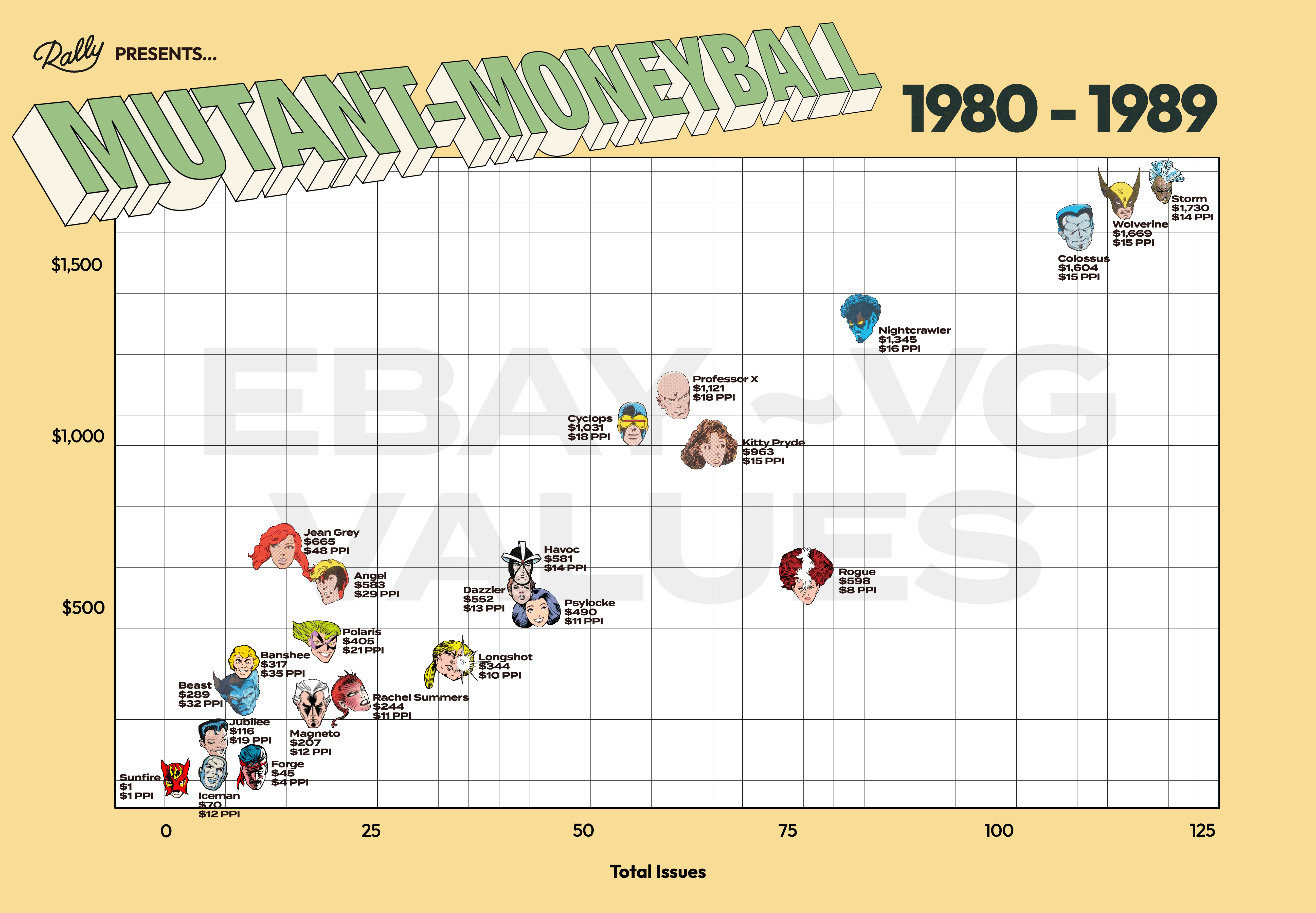
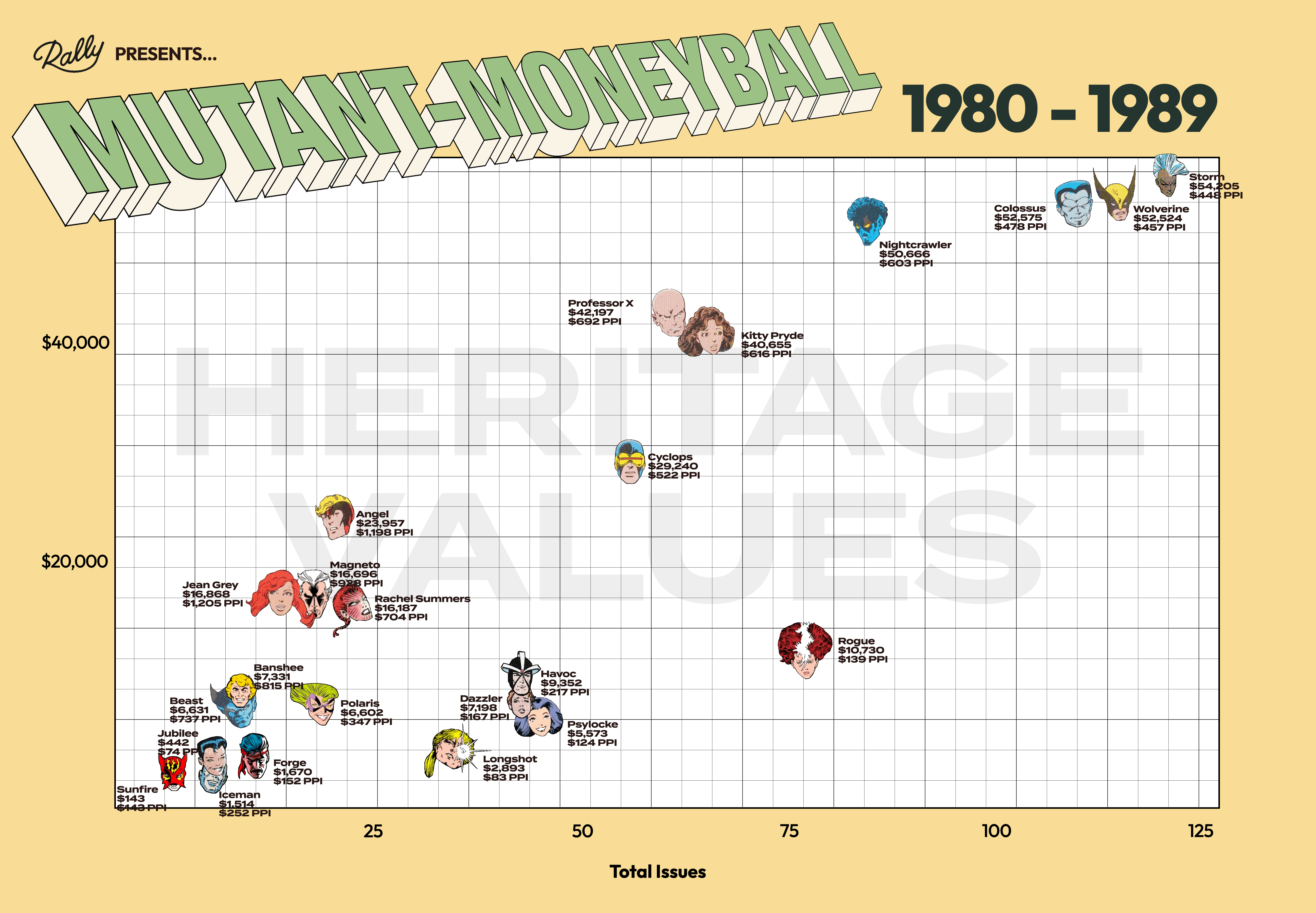
Most Valuable Mutant(s): Jean Grey with an average $48 dollars per issue (Declared VG condition) / $1,205 per issue (Graded 9.6-9.9)
Least Valuable Mutant(s): Sunfire with an average $1 per issue (Declared VG condition) and Jubilee with $74 per issue (Graded 9.6-9.9)
Most Valuable Comic: with a 9.9 condition grade sold (rare) the MVC sold via Heritage is issue 141 at $11,950, but runner up falling in the range of 9.6-9.9 is issue 129 at $3,840 which also holds highest value for VG eBay sales at $160
The 1990s
In 1992 a new X-Men #1 was released and became the best selling comic of all time (as mentioned earlier). The Uncanny X-Men (the title we are honing in on within this study – which was just titled X-Men until 1978) ran alongside this comic and as a result of the hugely successful X-Men #1 issue a number of X-titles and Mutant related material began to drop including X-Force, eXcalibur, X-Factor, and New Mutants. While some of these titles began in the 1980s, it was the 1990s when these comics more regularly started relating to one another, and make a close reading of a specific series less pointed.
In interview, Louise Simonson’s account of the development of X-Factor, complete with the resurrection of Jean Grey, paints a picture of the ugly side of art vs commerce and the extent to which Claremont was impossibly invested in the characters he’d cultivated: #xmen 1/4 pic.twitter.com/sAGCbHMDas
— The Claremont Run (@ClaremontRun) January 12, 2023
By the time the 1990s hit, one might think X-mania would have cooled, however it hadn’t even hit its most impressive benchmarks. In 1989 with Uncanny X-Men number 248, Claremont was paired with an artist named Jim Lee. Now the Chief Creative Officer over all of DC Comics, in ‘89 Lee was just starting to make a name for himself as one of the best new artists on the block. It was Lee that would ultimately best Claremont and push the X-Men into a new era, one impossible to analyze through the lens of one comic book series. At the dawn of the ‘90s a newly-public Marvel would make sure X-Men was no longer just a comic book title, but a brand in and of itself.
A Whole New Audience Wrenches Control
Chris Claremont had brought diversity of both ethnicity and gender into his X-World, garnering a staggering number of readers, more than a quarter of them female. This was something no other comic series could boast during the years of his run. Ironically, it was the success Claremont brought to the title that would be the scribe’s undoing: He had for years held his X-titles so close that he at least had major narrative input on all X-titles (including New Mutants, X-Factor, and Uncanny X-Men), but had lost that with the record breaking first issues of the new X-Men series. Marvel’s new play was in valuing a new class of creators that had a very unique modern artistic style. This new school of creators were providing eye popping glossy covers, wild viewing angles, and glistening figures; things the ‘90s would become far more known for than the kind of nuanced writing that Claremont demanded.
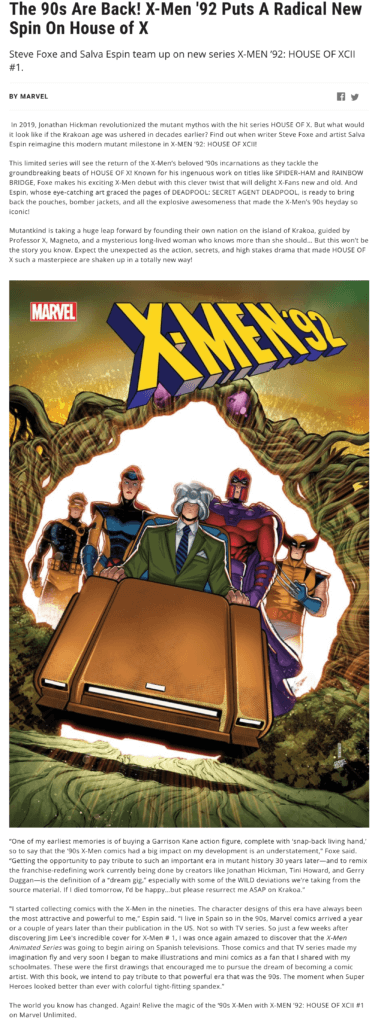
And demanded he did: Claremont laid out an ultimatum to affirm the control he felt he was entitled to, or Marvel would lose the head writer that had made the X-Men series the firebrand it was. In the end, the Marvel of 1992 chose not to give into Claremont’s demands, and Claremont’s final X-Men story would be X-Men #3.
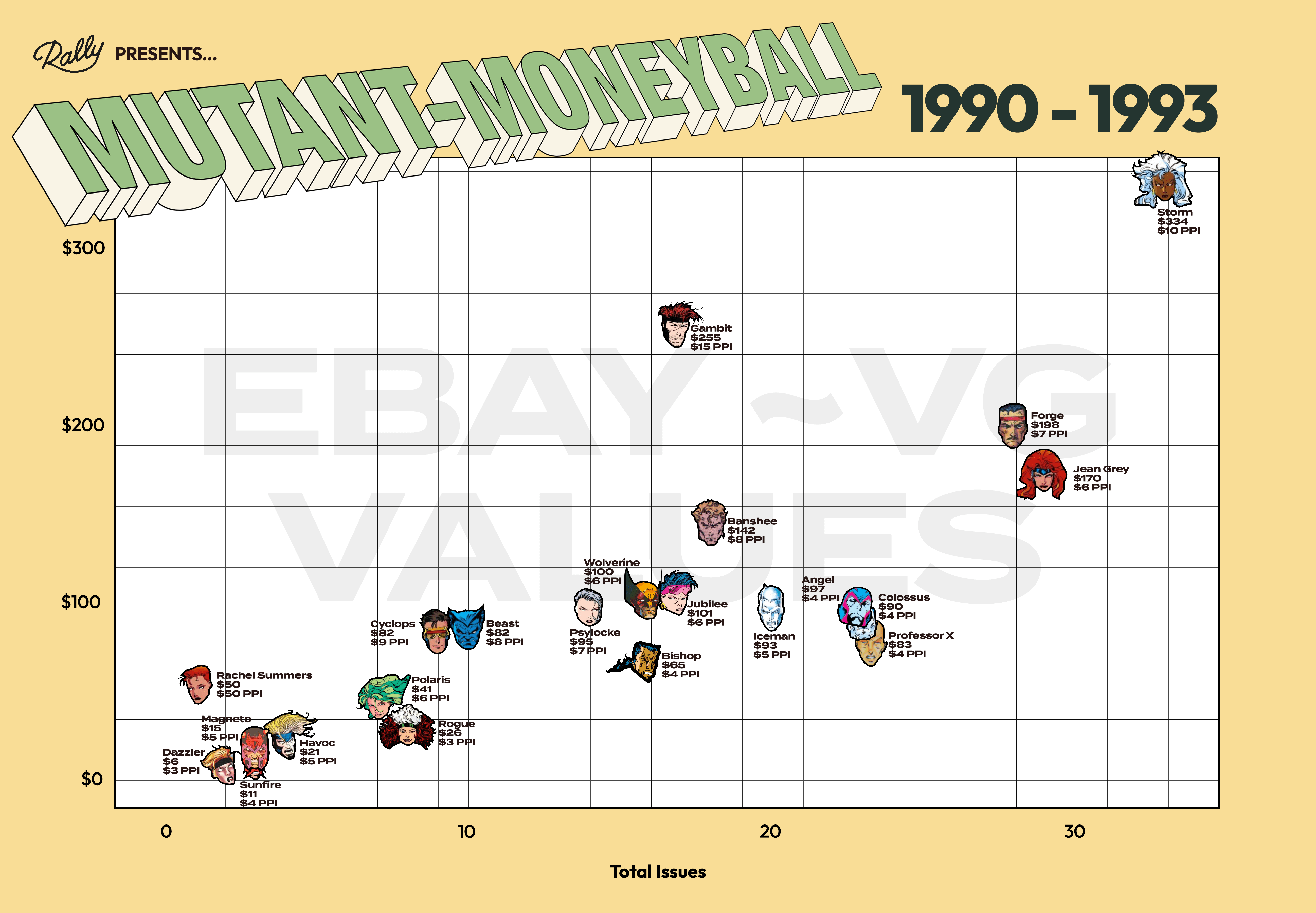
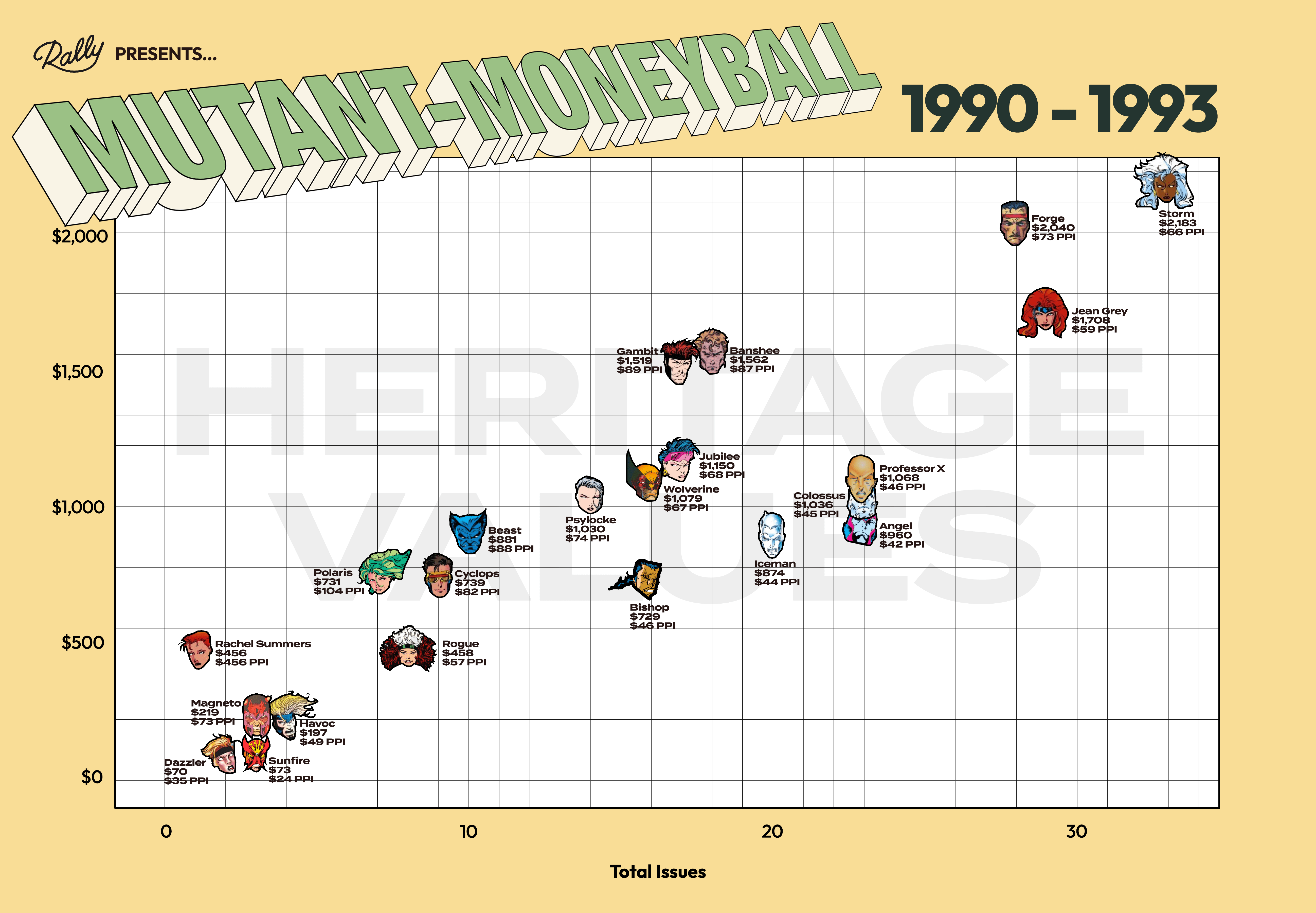
Most Valuable Mutant(s): Rachel Summers with an average $50 per issue (Declared VG condition) / $456 per issue (Graded 9.6-9.9)
Least Valuable Mutant(s): Allison Blaire (Dazzler) with an average $3 per issue (Declared VG condition) and Sunfire with $24 per issue (Graded 9.6-9.9)
Most Valuable Comic: Issue #266 with the VG condition sale of $151 and grade 9.6-9.9 at $336






